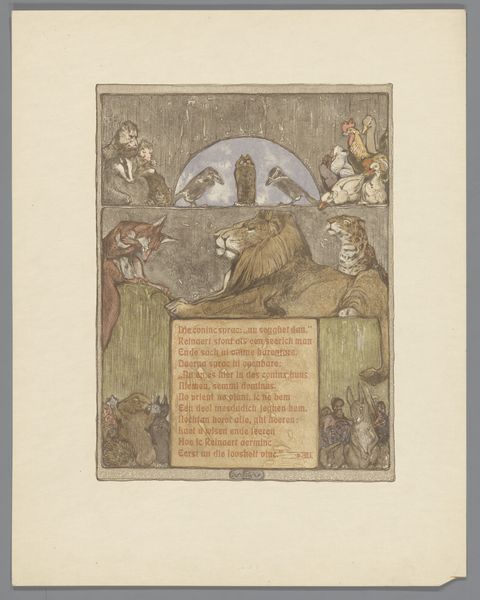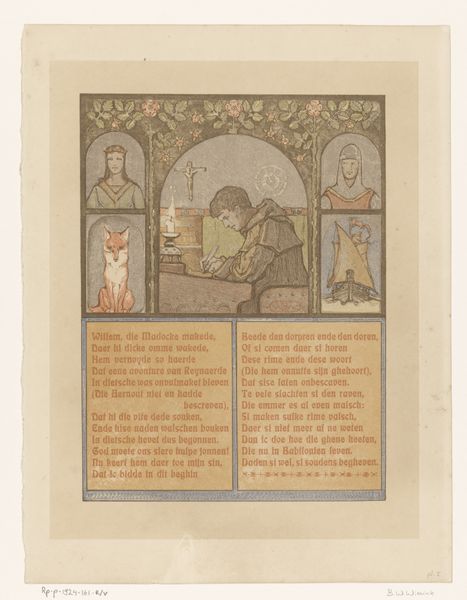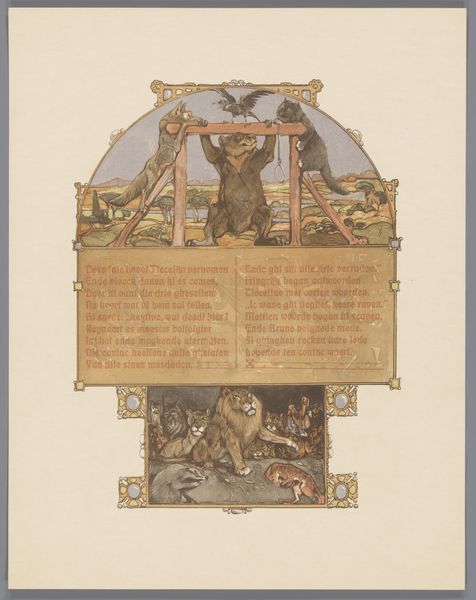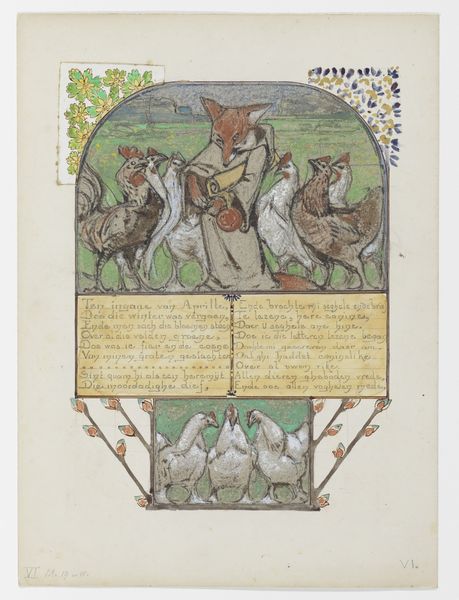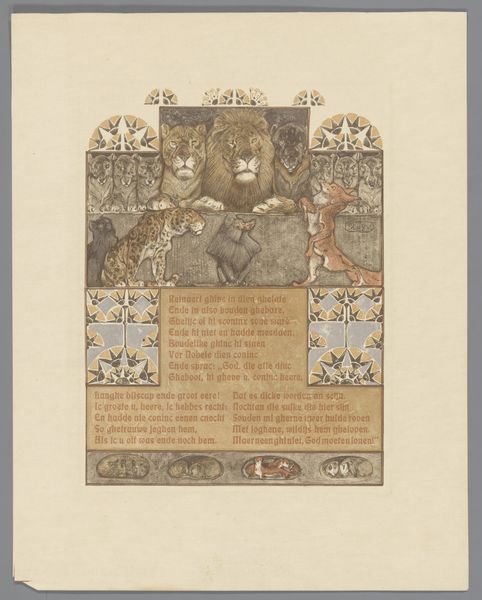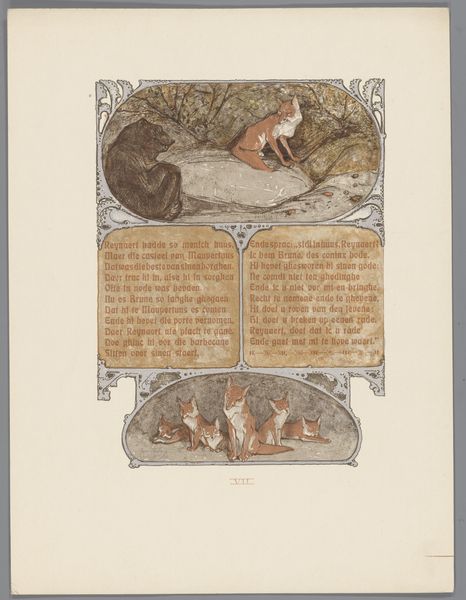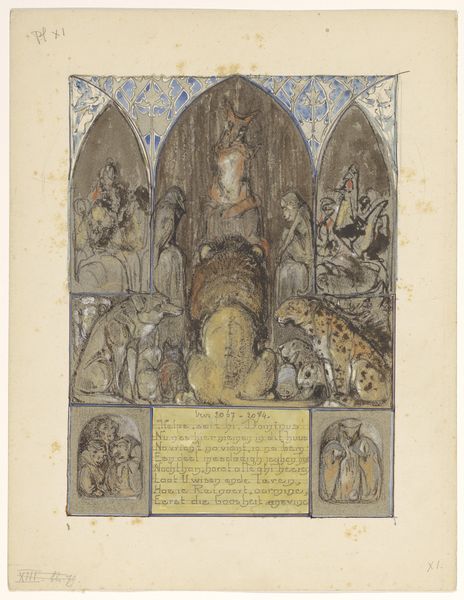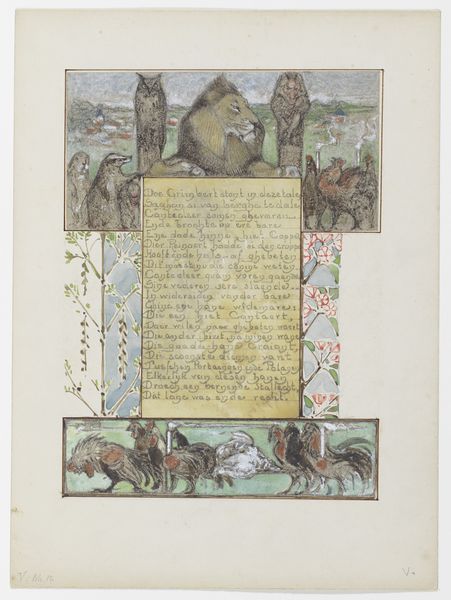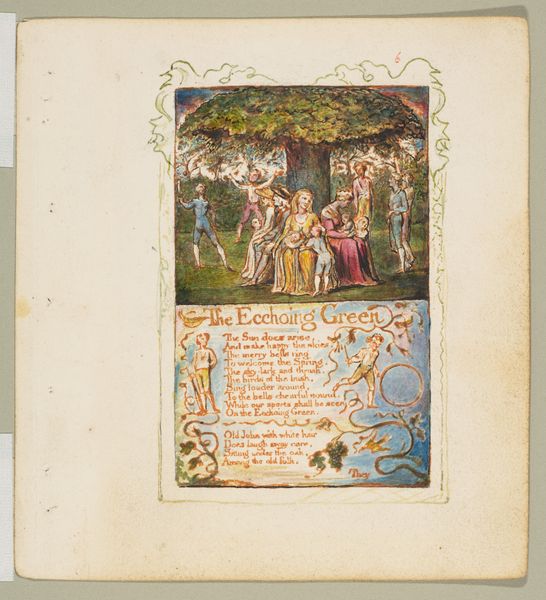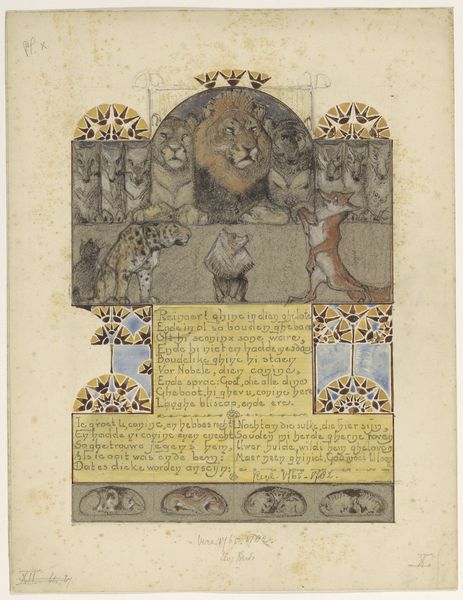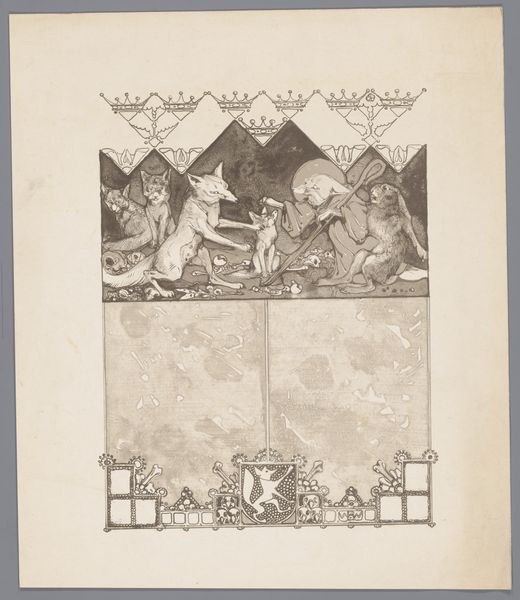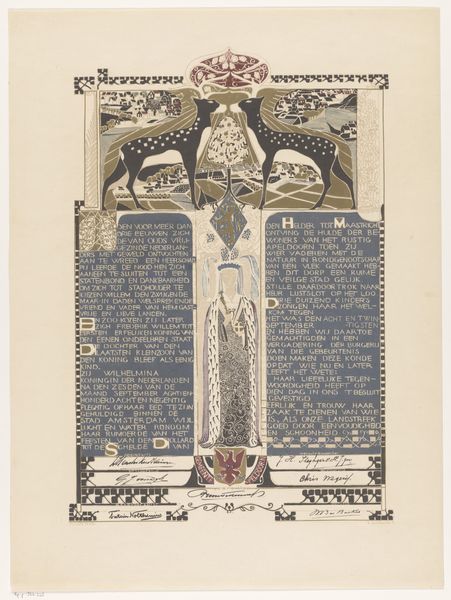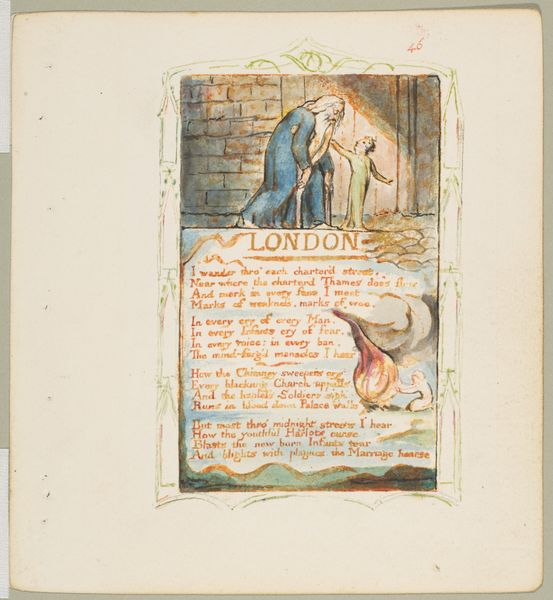
Vos in monnikspij (Reinaert) omringd door kippen en haan (Cantecleer) 1910
0:00
0:00
watercolor
#
fairy-painting
#
aged paper
#
toned paper
#
paper non-digital material
#
narrative-art
#
sketch book
#
personal sketchbook
#
watercolor
#
symbolism
#
watercolour bleed
#
watercolour illustration
#
storyboard and sketchbook work
#
sketchbook art
#
watercolor
Dimensions: height 352 mm, width 277 mm
Copyright: Rijks Museum: Open Domain
Curator: Let’s turn our attention to Bernard Willem Wierink’s piece from 1910, currently housed at the Rijksmuseum. It's entitled "Vos in monnikspij (Reinaert) omringd door kippen en haan (Cantecleer)". Editor: Oh, there's an immediate feeling of unease here, almost a satirical take on a religious scene. It’s strange and intriguing—like a dark fable brought to life. Is that watercolour on aged paper? Curator: Precisely. Wierink used watercolour on paper, likely as part of a sketchbook. The "aged paper" tone you notice speaks to its production era and perhaps even contributes to that sense of historical fable you’re sensing. Note how he creates an image imbued with Symbolism, almost like an illustration from a storybook. What do you make of his visual choices, especially rendering Reynaert, the fox? Editor: Well, first off, this work immediately shouts materiality. Look at the use of watercolour, so crucial. See the way it bleeds, suggesting both fragility and decay. You know, this work almost anticipates animation with that sketchy, sequential storytelling. Is that Reynaert in monk's clothing? The very act of portraying Reynaert in such garb satirizes organized religion's structures of power, and his animal nature suggests a savage id only thinly veiled by costume. Curator: Spot on. Reynaert is a figure of cunning, and he's depicted as a monk—a clear visual metaphor about hidden motives. He's also framed within this carefully designed composition that uses floral patterns and what appears to be gothic script which is common of fairy paintings. Editor: Speaking of that text, it highlights a culture dependent on text, on rhetoric, to either veil or reveal truth, just like this character Reynaert himself does. What interests me here, materially, is also how watercolor paintings would have been circulated and sold. Were these originals for a specific illustrated edition of "Reynard the Fox", and if so, how does its function shape the work itself? Curator: Fascinating question. We can read into it the story of the painting’s reception, circulation, and perhaps Wierink's social commentary regarding such imagery in broader culture. That being said, looking at it as sketchbook art suggests something even more personal about exploring his interpretation of fables through art-making. It almost beckons a story waiting to be unveiled. Editor: Absolutely! And through that, Wierink is drawing upon potent collective visual memories here, connecting fable to culture. This combination of materials and symbols lets you think about the relationship of fabrication to truth…It feels like there is an allegory here we may never grasp fully.
Comments
No comments
Be the first to comment and join the conversation on the ultimate creative platform.
